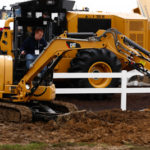The International Construction and Utility Equipment Exposition (ICUEE), slated for October 3 to 5 in Louisville, Ky., will let industry professionals and engineers explore some of the latest technology innovations related to mobile equipment and fluid power. Of particular interest will be the opportunity to get a hands-on look at hundreds of new machines ranging from aerial lifts and skid steers to trenchers and forestry equipment—along with the latest hydraulic components, systems and controls that make them go. Here’s a quick overview of just a few of the newest products and machines that will be on display.
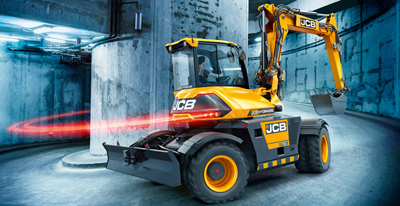
JCB will showcase its recently introduced Hydradig, what the company calls a “revolutionary, new tool-carrying machine that delivers unparalleled visibility, stability, maneuverability, mobility and serviceability” for urban construction, highway maintenance and municipal contractors.
The Hydradig is powered by a Tier 4f EcoMAX diesel engine and has a sturdy, all-wheel drive, four-wheel steer chassis based on JCB’s proven Loadall telescopic handler. Its hydrostatic drive combines a variable-piston pump, a variable-piston drive motor and a central transfer box to power both axles. This layout offers a stepless 0 to 25 mph range without multiple gears or a loss of traction when speeds change. The machine is equipped with two-wheel and four-wheel steering modes, and crab steering for maximum maneuverability on site.
According to company officials, a key requirement was to lower the machine’s center of gravity, to boost stability and mobility. As a result, the engine, driveline, hydraulic pump and tank, and diesel tank all mount on the lower chassis, making the Hydradig incredibly stable during lifting operations—even without stabilizers. That also gives the upper structure a reduced tailswing of just over 4 ft, about 30% less than competitive machines. This permits work in confined construction sites or within a single-lane roadway.
A high-flow auxiliary circuit is standard, and the machine can be equipped with two low-flow circuits, plus dedicated hydraulics for quick-hitch operation. Fully guarded hose-burst check valves are available on the boom, dipper and bucket rams for optimum lifting safety. An optional hand-held tool circuit lets operators work with hydraulic tools like breakers and road saws. The JCB Hydradig is a versatile tool carrier and can be used with nearly 50 different attachments, making it suited for wide-ranging applications.
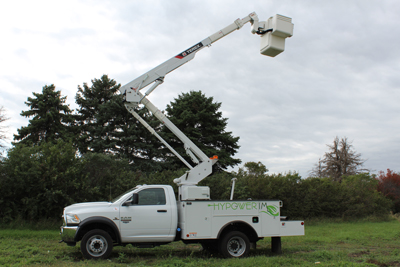
Terex HyPower IM for telescopic aerial devices lets users take full advantage of a machine’s hydraulics while reducing fuel consumption and exhaust emissions. HyPower IM is an efficient and lightweight idle-mitigation system. It includes a 48-V lithium-ion battery circuit that charges from either a standard 120-V plug-in or the engine alternator during road travel. It’s similar to but more economical than a hybrid system.
The system automatically switches from battery power when the truck is idling to engine-supplied power when hydraulic controls engage. According to Terex officials, the aerial hydraulic controls on a typical trouble truck are only engaged for about one hour in a normal eight-hour shift. By switching the hydraulic system to engine power during those brief intervals, HyPower IM provides emissions efficiencies plus optimum hydraulic control functions. The transition is seamless, and operators experience no lag time in hydraulic responsiveness.
In addition, HyPower IM keeps the truck cab heated or cooled without the engine running. The unit is currently available for Class 5 Chassis, such as Ford, Dodge, and GM trucks, used with Terex Hi-Ranger telescopic aerial devices.
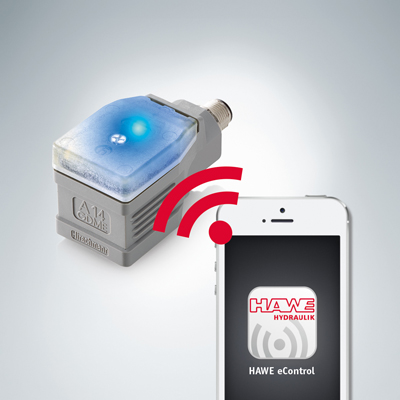
HAWE North America’s EV2S-BT electronic proportional amplifier controls all standard proportional solenoids, including solenoids for directional and pressure valves, and pump controllers. The amplifier is designed as a plug which simplifies assembly. Preset parameters for most common types of mobile and industrial hydraulic valves significantly facilitate start-up operation. Standard input signals include 0 to 10 Vdc, 4 to 20 mA and CAN bus. Direct connection to a CAN network, and data within the device, can relieve the main machine control of many tasks.
The amplifier is also equipped with a Bluetooth interface, letting the EV2S-BT be installed in inaccessible places and controlled wirelessly using the HAWE eControl App via a smartphone. Users can display or set important parameters—like input signal, minimum and maximum current, dither and ramp times—in seconds; nominal value, output current and device temperature are displayed in real time.
Configuration work can also be stored, loaded and replicated quickly. This is especially valuable for applications with series production. EV2S-BT users can download the HAWE free eControl App from the App Store or the Google Play store.
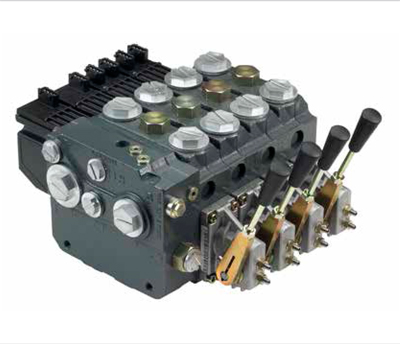
The PVG load-independent proportional valves from Danfoss Power Solutions help users meet requirements for high control and productivity with optimum safety, and at the same time minimize emissions from mobile machines. The broad range of modular valves is designed to handle complex control challenges and demanding machine tasks.
The electrohydraulic valves permit flexible and customized system design and provide for a variety of configurations—from simple load-sensing solutions to CAN bus communication—ensuring smooth machine control. And because PVG parts are interchangeable, valve specifications can be easily altered to accommodate new functions and meet rapidly changing market needs.
Users can devise a valve stack for most any work and control task incorporating both simple load-sensing and advanced electrically controlled load-independent proportional flow valves. Load-sensing technology provides higher efficiency and safety, lower energy consumption and longer system life. It also reduces wear and tear on other components in the system. Load-independent flow control enables precise operation and improves productivity.
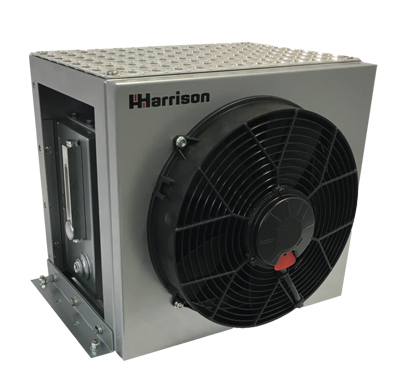
The PVG 100 post-compensated flow sharing valve lowers the oil flow to all basic work functions in response to a limited supply from the pump. In addition to enabling a smaller pump, flow sharing helps prevent power losses—optimizing productivity when less power is available.
The Hydra-Qube from Harrison Hydra-Gen is a compact, lightweight and efficient hydraulic fluid-conditioning module for mobile systems, permitting continuous hydraulic operations while controlling oil temperature and filtering return-line oil. Hydra-Qube uses a 3 to 5 gal reservoir, compared with a traditional tank as large as 75 gal. The all-in-one module includes a heat exchanger, reservoir and oil filter, and it readily mounts and integrates into a work truck. Two sizes are rated for up to 25 and 50 gpm flow. It uses a 12 Vdc-powered cooling fan and has an optional pop-up filter dirt alarm.
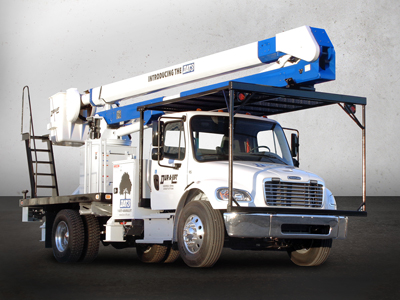
Dur-A-Lift’s new DAT3 articulating telescopic aerial lift is a bucket truck that features a non-overcenter design for greater stability and side reach, as well as a novel upper telescopic boom. It provides a working height to 75 ft and maximum side reach of 48 ft. The unit features a closed-center, pressure-compensated hydraulic system with joystick control at the platform, an automatic on-demand throttle system, individual outrigger controls and an outrigger/boom interlock. It also has a hydraulic platform-leveling system with platform tilt, and the hydraulics permits 360° continuous rotation. A 25-gal hydraulic reservoir includes a shut-off valve, and there’s a set of hydraulic tool outlets below the point of rotation. The DAT3 is also available with the company’s new Outrigger Analyzer.
ICUEE
www.icuee.com

